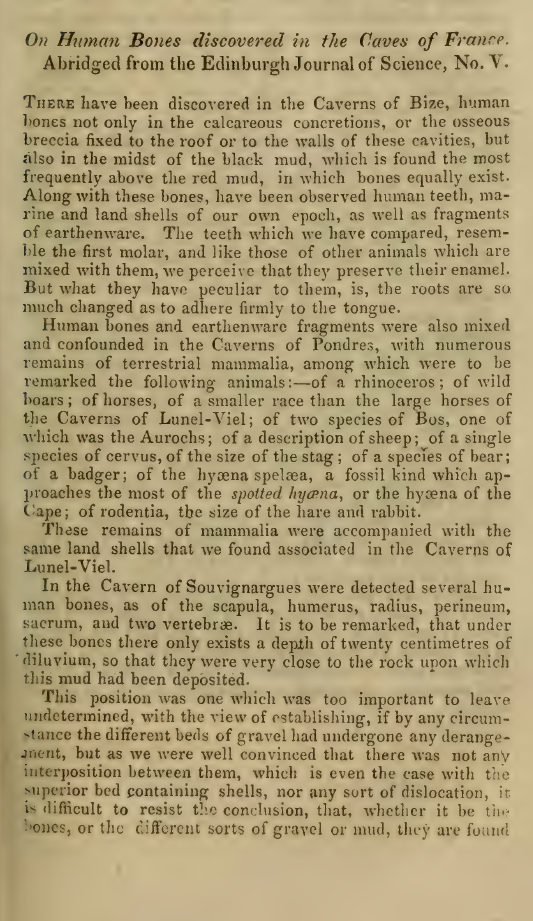On human Bones discovered in the caves of France
DOI:
https://doi.org/10.21504/saqj.14.2672Keywords:
Geology, Caves -- France, Diluvium, Osseous Breccia, Human Bones, Human Teeth, Earthenware (Pottery), Terrestrial Mammalia, Antediluvian, Hermite (Caves of France), Pondres, Bize, Souvignargues, Lunel-VielAbstract
This article (abridged from the Edinburgh Journal of Science, No. V.) reports on the discovery of human bones and artefacts mixed with the remains of extinct fauna in three distinct caves in France: Bize, Pondres, and Souvignargues.
In the Caverns of Bize, human bones and teeth were found in both calcareous concretions and in the black and red mud, alongside marine and land shells and fragments of earthenware. In the Caverns of Pondres, human remains and pottery were similarly confounded with those of a diverse terrestrial mammalian fauna, including species like rhinoceros, aurochs, various horses, deer, and the fossil hyena (Hyæna Spelæa). The remains in Souvignargues were found close to the underlying rock.
A key focus of the comparison was to establish the antiquity of the human remains. By comparing the cave bones with those from ancient Gaulish sarcophagi (dated 14 to 15 centuries old), the bones from the caves were inferred to belong to an epoch far remoter. Furthermore, the crude nature of the accompanying pottery suggested it belonged to the "first infancy of human arts," predating Roman influence in Gaul.
M. de Serres concludes that:
-
Since the appearance of man, certain species of terrestrial mammalia have been completely destroyed (extinct).
-
The remains of our species are incontestably mixed and found in the same geological circumstances with certain terrestrial mammalia previously considered antediluvian. This challenges the contemporary view that humans did not coexist with these ancient, extinct species.
Downloads

